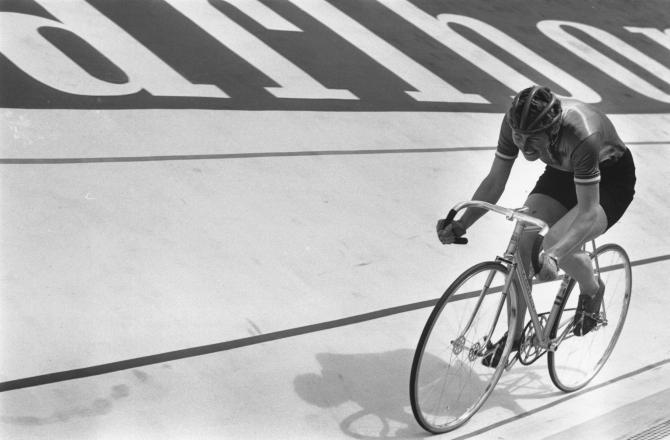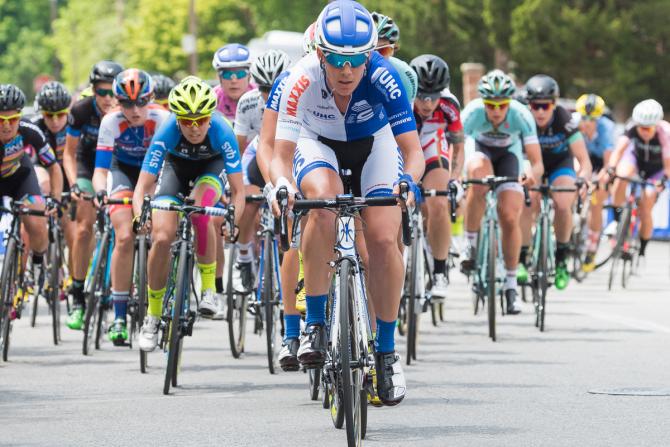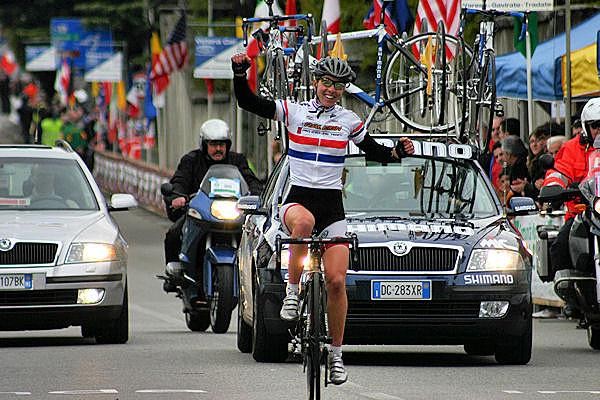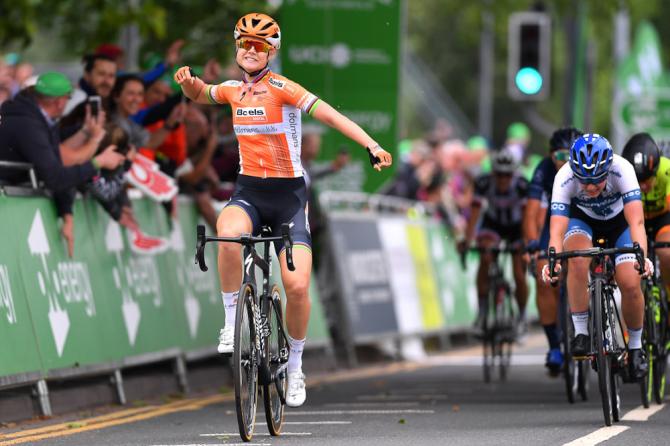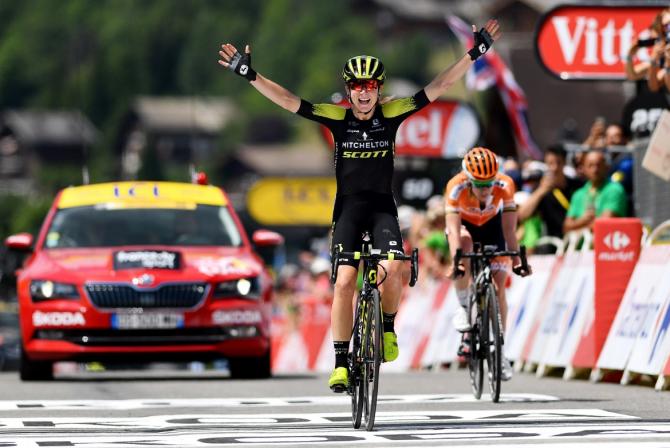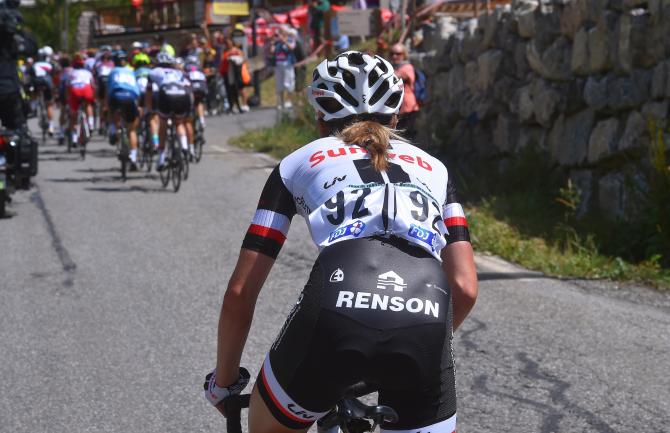Feature: Can women race a three-week Grand Tour?
From physiology to economics, the whys and why-nots of a women's Grand Tour
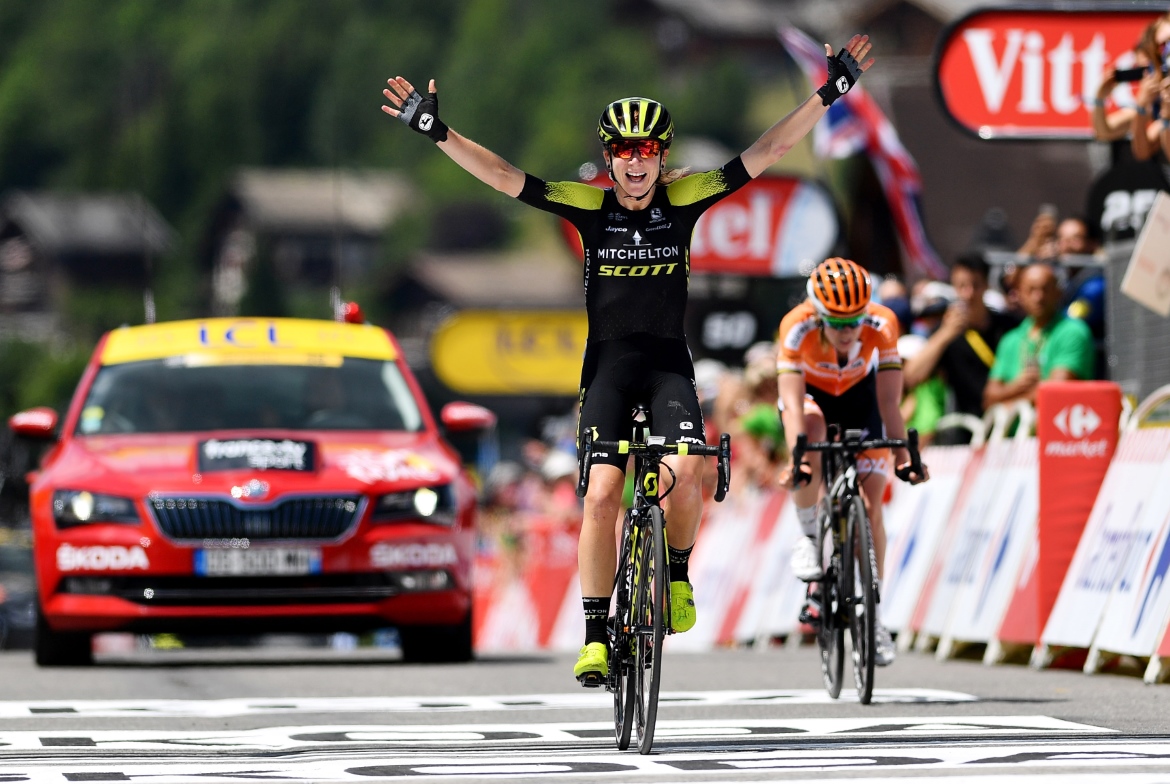
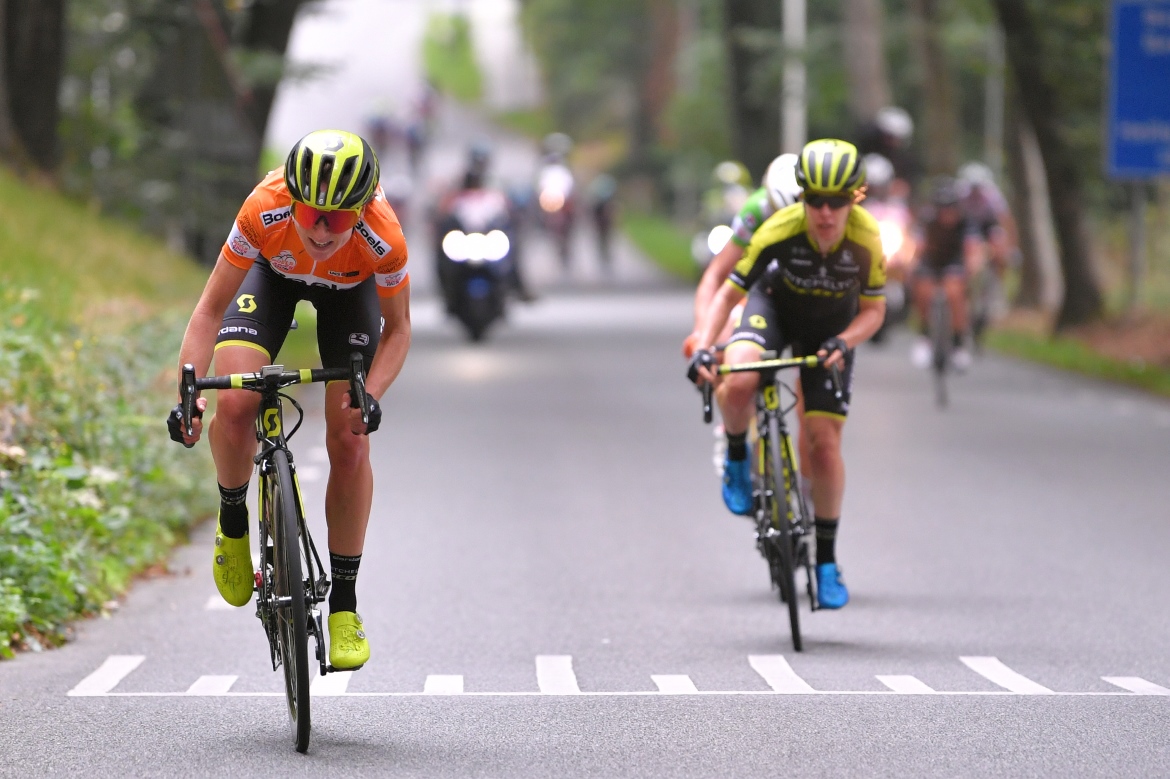
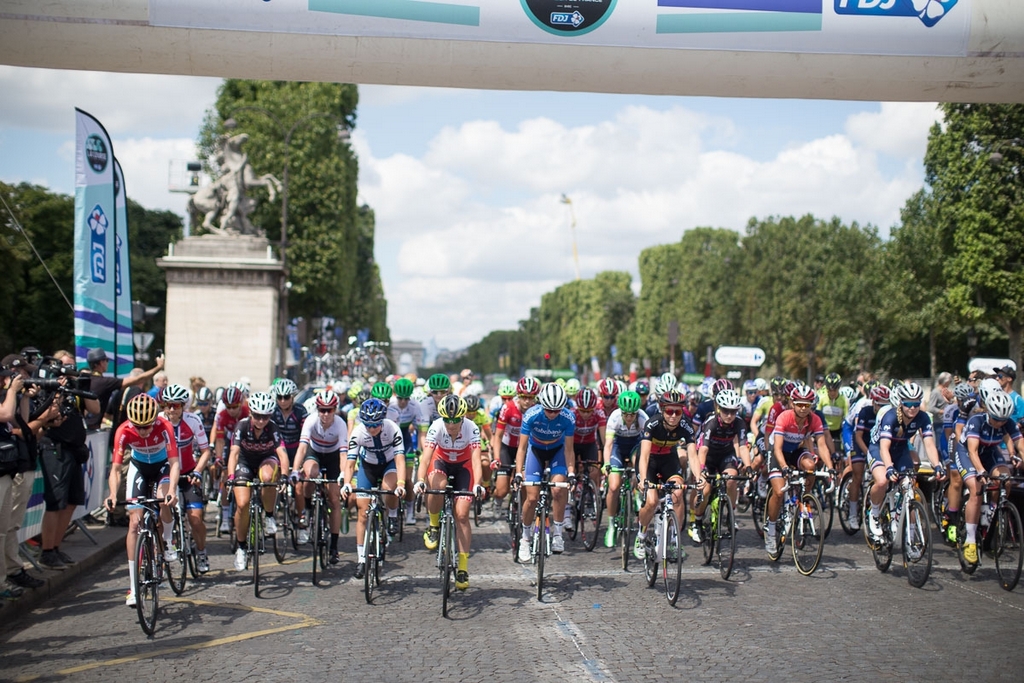
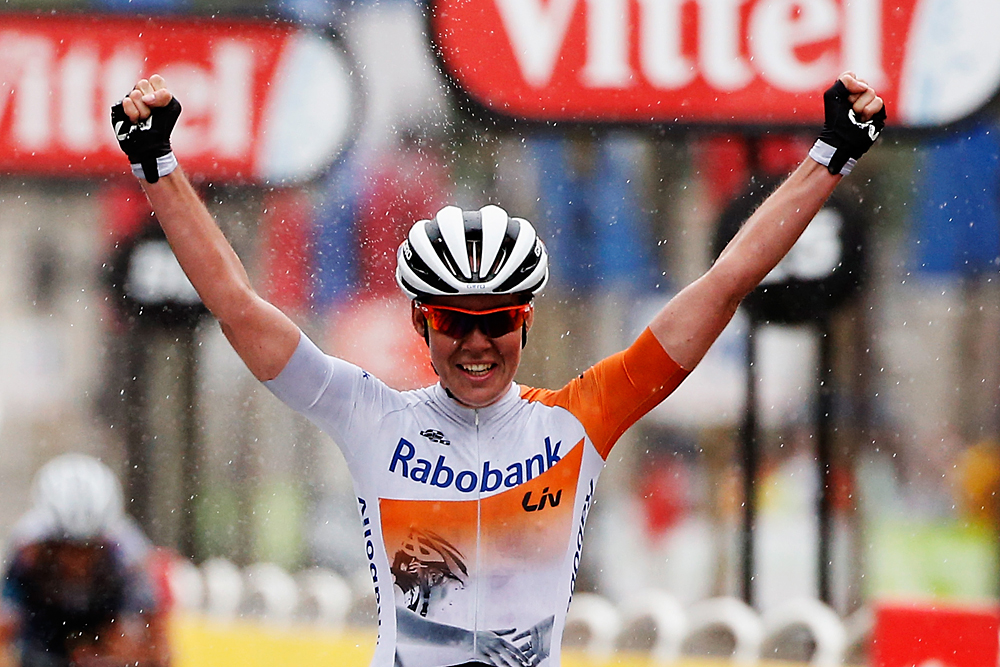
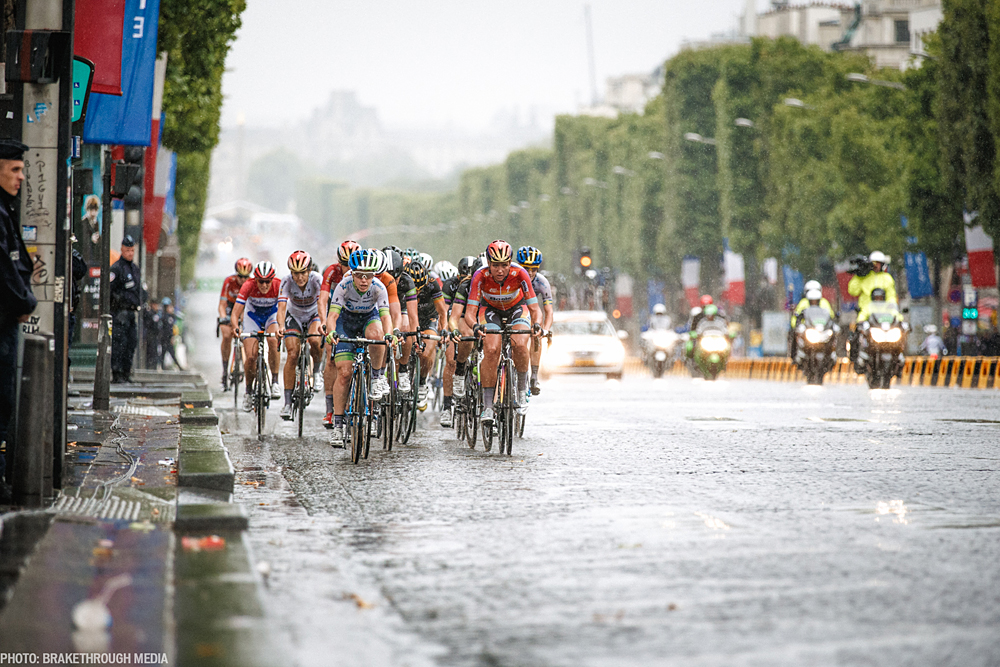
While Simon Yates made history as one of three British riders to win all the men's three-week Grand Tours in one year, women's cycling made history in a more modest way, with the first-ever women's stage race at the Vuelta a España – all two days of it. While the mountains of Andorra, Covadonga and the Balcón de Bizkaia provided an epic stage for the men, the women got to show what they could do with a flat team time trial, followed by a sprinter's circuit race around Madrid.
Over the summer, the subject of equality in men's and women's racing has been a frequent topic, with debate continually revolving around the same themes: why isn't there a women's Tour de France? Why is it so hard to watch the Giro Rosa? Why, with the exception of the Giro's 10 days of racing, does the UCI only allow six days maximum for a women's stage race, while the minimum number of stages for a men's Grand Tour is 15?
If women's stage racing is so limited, it begs the question, can women even ride a three-week Grand Tour? And if so, why does the UCI limit women's stage racing?
Physiology
"To me it's really obvious – there's no physiological or any other reason why women couldn't also do a three-week event," says Dr. Ross Tucker, of Science of Sport, which draws on the latest scientific research to shed light on debates and controversies within the sporting world. "Of course they are capable of it. The only barrier is a socio-cultural one." He points out that, "elite marathon runners all run 160 to 200km per week, male and female, and that's over many more weeks than three.
"Cycling seems to me to be where running was in the 1940s," he adds. He cites the famous case of the 1928 Olympics, where a number of women allegedly collapsed at the finish of the 800m running race (a myth, incidentally, that was effectively debunked in a 2012 Runner's World article). The Olympic committee used this early example of 'fake news' to limit women's track racing to distances of no more than 200m – for the next thirty years. It wasn't until 1984 that women got to run the marathon in the Olympics.
That same year saw female riders get their first Olympic road race. But while there are no longer any distance limits for female runners, who compete in ultra marathons and Iron Man triathlons, the distances for female cyclists are still severely truncated compared to men. For example, in a WorldTour stage race, the maximum distance for an individual women's stage is 160km, while for a men's stage it's 240km. The maximum average daily distance is 140km for the women and 180km for the men. Those are differences of between 22 and 33 per cent. This doesn't even take into account the other ways difficulties are removed from women's races, such as this year's controversial World Championship route in Innsbruck, where women won't be riding the notorious 'Hell Climb' that features on the last lap of the men's race.
The irony is that women are arguably better endurance athletes than men. There's no shortage of anecdotal evidence suggesting they have a natural talent for going long and hard, and there are even a few stories of them beating men in this respect. In 1940, Pat Hawkins broke the Australian men's record for seven days' continuous cycling. More famously, in 1967, Beryl Burton broke a men's record of nine years' standing in the 12-hour time trial.
The latest race content, interviews, features, reviews and expert buying guides, direct to your inbox!
The qualities that make for a good endurance athlete are arguably more complex than what makes a good sprinter, and it's consequently hard to compare men and women with scientific precision. In running, however, "if you match men and women for performance at shorter distances, the women outperform the men at longer ones," Tucker says. So if you compare men and women who have similar 10km or 21km times, "the women tend to be faster than the men at the marathon. And this is not universally true, but it is broadly the case." It appears that, "other factors help women relatively more than men. These may be metabolic, may be psychological, [we're] not really sure, but women do come into their own over longer distances.
"There is such a thing as the female triad – eating disorders, amenorrhoea and decreased bone mineral density – which is more common in sports where weight is a factor, and of course cycling will be such a sport," Tucker acknowledges. "However, I'd contend that what we see in men's cycling these days is actually not all that different." He cites research revealing reduced bone mineral density in elite male riders and points out; "I don't think anyone can reasonably think athletes can get as skinny as the ones we see in men's cycling without a combination of extremely aggressive dieting (which is a euphemism) and doping. I doubt even the most enthusiastic supporter thinks that the extremes of endurance sport are healthy. Or they shouldn't."
Cycling, of course, has a long history of being physically punishing. Famously, Henri Desgrange, the Tour's founder, once fantasised about making his race so hard, only one rider would make it back to Paris. When the Pélissier brothers caused a scandal by abandoning it in 1924, they spelled out in gothic detail the ways in which they suffered: "We're drained all the time by diarrhoea," they told journalist Albert Londres. "We can't sleep at night. We're twitching as if we've got St Vitus's Dance... And our toenails. I've lost six. They fall off a bit at a time all through the stage." Then they emptied out their pockets to show what helped them get through it all: "There's cocaine for our eyes and chloroform for our gums…"
We're a long way now from the 400km stages that were a feature of early 20th century racing, but it's a concern for riders' wellbeing that lies at the heart of the UCI's limitations – not just for women but also men – on the number of days and overall distances in races. (Perhaps equally importantly, those limitations seek to eliminate any perceived 'need' to dope, given a lot of cheating in endurance sport is not really about going faster, but suffering for longer.)
So, are health concerns the reason for limiting women's stage races? When I put this question to the UCI, a spokesperson echoed Tucker's comments regarding the female triad, adding, "One of the objectives of the new UCI medical program will be to prevent these incidences on female riders." However, there was no specific confirmation that this was the rationale for the shorter race distances.
Iris Slappendel has her doubts the UCI limits women's stage racing simply for health reasons. A recently retired pro, she heads up The Cyclists' Alliance, which works closely with the UCI and other stakeholders to improve conditions for female riders. She points out that many of the UCI's rules have been in place for many years, and have been slow to evolve, adding that until a few years ago there were even regulations regarding the average age of riders on a women's team. The limitations on stage races were introduced in 2001 or 2002, however, not 1972, which doesn't count as ancient history if you were born in the 20th century.
Thibaut Pinot's dramatic abandon from this year's Giro d'Italia with pneumonia suggests the UCI could also do more to prevent male riders from pushing themselves to such physical extremes. Perhaps the men, too, should have shorter races? When asked if the UCI discussed these concerns, their spokesperson said, "The UCI Medical Commission is very attentive to the fact that the Grand Tours does not go through the exhaustion of riders and dropping out for medical reasons. Regulating the duration of the stages should allow a better recovery of the riders, without affecting the show of the race," which suggests they reckon they've already got the right formula for men.
What makes these disparities between men and women suspicious, apart from the sense that the UCI isn't paying proper attention to sports science, is the fact that they exist at much shorter distances, such as the 4,000m Individual Pursuit for men on the track, compared to the 3,000m for women, or the men's 1,000m sprint time trial, compared to the women's 500m. What possible justification can there be for these differences, other than simple, old-fashioned chauvinism?
Historic precedents
This summer a group of women made headlines by riding the Tour de France route one day ahead of the men. It was an impressive achievement, although no doubt cynics will point out that it wasn't ridden as a race. They might want to consider this instead: in 2014 teammates Evelyn Stevens and Trixi Worrack rode two back-to-back stage races – the women's Giro Rosa in Italy followed by the Thüringen Rundfahrt in Germany – entailing 17 consecutive days of racing and what would have been a more than eight-hour transfer between both countries.
Even more remarkably, Stevens won the German race, thanks in part to a dominating time trial on stage 3. Talking about her 17-day 'tour' afterwards, she said, "I actually felt I got stronger and a little bit tougher as time went on," and she went into the time trial feeling confident: "it comes to a point where you realise you're not going to have good legs, but you have the ability to suffer."
Naysayers might also want to consider female participants in the Race Across America, which is approximately 30 per cent longer than the Tour de France, and is ridden without stopping. Seana Hogan, the current record holder, did it in nine days and four hours in 1995.
We should also mention Alfonsina Strada, who in 1924 became the only woman who has ever been allowed to participate in a men's Grand Tour. The same year the Pélissiers left the Tour de France in a huff, Strada rode the entire 3,613km Giro d'Italia, featuring 12 stages averaging over 300km. After a crash that broke her handlebars on the eighth day of racing, she failed to make the time cut and was taken off the GC, but she was nonetheless allowed to continue to the end. Out of the 90 riders who started, she was one of only 30 who finished.
But even very recently, there was a golden age of women's stage racing that most people, it seems, have completely forgotten. Women's racing entered the modern era in 1984 with the Olympics and with the first women's Tour de France. That Tour was created by the same race organiser, and was held on the same roads and on the same days as the men's race. Félix Lévitan would in all likelihood have made it exactly the same, were it not for the UCI capping the race at 18 stages and limiting the stage distances. A host of women's stage races were launched that year, including the Ore-Ida Women's Challenge, which eventually became known as the toughest women's stage race of all, with 17 days of racing. Inga Thompson won it in 1987 and 1990, when the UCI refused to ratify it.
By the late 1990s there were three major stage races on the women's calendar: the somewhat tamed yet tremendously successful Women's Challenge, then sponsored by Hewlett Packard, which offered the biggest prize purse of any US race, male or female, and the women's Giro and the Grande Boucle Féminine (as the women's Tour de France was now known), which were both two weeks long. French TV offered one hour highlights of the latter race every evening.
For Nicole Cooke, at that point a precociously talented teenager growing up in Wales, the future of women's cycling looked bright. When she first rode the women's Grande Boucle in 2002 it was two weeks long. Yet by the time she took the first of her two overall victories there, in 2006, it was down to six stages. By the time she retired, in 2013, it had completely disappeared.
The decline of women's stage racing since the early 2000s is a long and complex story that warrants unpacking in greater detail, but to put it briefly, the problem of sponsors walking away is only a fraction of the story, an outward symptom of a blight affecting the whole ecosystem of women's racing. "There's been a lot of outstanding and quite astonishing decisions made by the people running the sport," says Cooke, "and it has all led to an essentially very tragic downfall of the women's Tour de France."
Cooke remembers that two-week Tour de France in 2002 as, "an amazing showcase of women's cycling," featuring stages in the Alps and the Pyrenees. "The competition was really fierce in terms of the best riders doing it because it was the high point of the calendar.
"It certainly isn't a question of 'could they do a three-week tour' – they definitely can," says Cooke.
Is women's stage racing interesting?
This brings us to the elephant in the room: for all that might be said about the brilliance of striving to put on a women's race that was the equal of the Tour de France, one person I spoke to who prefers to remain anonymous said that those early years of the women's Tour did a lot of harm to the women's sport. The event was chaotic; the teams were hastily cobbled together and featured amateurs who in most instances had never ridden together, let alone competed in a stage race. They had no idea of tactics. A few brilliant riders would dominate the race, while the rest of the peloton trailed behind, like participants in cyclosportive. It wasn't, according to my source, very exciting to watch. As a consequence, the boy's club of cycling correspondents didn't bother giving it the time of day.
All this changed in the early 1990s with the end of the Soviet Union and the arrival of some highly competitive and motivated Lithuanian riders who became a catalyst for the – by now more experienced – women's peloton to up its game even further. The same person who critiqued those early years of racing declared that by the end of the decade, women's cycling was as exciting as anything you could watch on the men's calendar. Unfortunately the cycling press had already walked away.
The women's peloton in 2018 is a world away from the brave pioneers of the 1980s, but every rider I spoke to was in agreement that a three-week race couldn't be introduced overnight, and would have to emerge over time.
There was little doubt, however, that the riders could put on a good show. As Cooke puts it: "Is women's racing interesting? Yes, absolutely. Do they know how to race, the tactics? Yes, absolutely. It's more of a question of: why don't they have a showcase?"
What is the UCI's position on longer women's stage races?
While I didn't get a clear explanation from the UCI about their rationale for limiting women's races, they did suggest there were practical considerations given that the current women's calendar is already quite full: there isn't really room for a 23-day race without overlapping with existing events.
Because women's teams are much smaller than men's teams, and consequently don't have the resources to send two sets of riders to two simultaneous events, having races that clash is something the UCI seeks to avoid at all costs. The UCI also pointed out that they haven't received any applications for a three-week women's race, but added: "The UCI would of course be open to exploring future opportunities should they arise in the future."
Slappendel contends it could be fairly easy for a well-run six-day stage race to get permission to extend to ten days. Indeed she indicated there was interest from within the UCI to do just that with the OVO Energy Women's Tour of Britain – widely regarded as a beacon of modern women's stage racing, with fully televised stages and an equal prize purse to the men's race – but that resistance to expansion came from other quarters.
Questions of economics
This is perhaps the moment to consider the economics of women's racing, and the argument that no one watches women's racing, and so it has no appeal for sponsors. Consequently, women's stage races are not worth the effort that goes into putting them on, since organising races is an expensive business, and no matter how passionate the organisers might be, they have to, at the very least, break even. Why would anyone in their right mind organise a three-week women's race?
The no appeal/no sponsors argument is, of course, a catch 22. If fans can't watch or read about a race, how are they supposed to find it interesting? And if there's no audience, what is the appeal for brands hoping to reach new customers?
Thankfully this argument is becoming increasingly dated. Women's cycling is growing, both professionally and recreationally, and media coverage, thought it still leaves a lot to be desired, has vastly improved in the last ten years. The emergence of new brands making women's-specific products generates advertising, which in turn puts pressure on media outlets to cover the women's sport more extensively. Teams and riders are no longer waiting for traditional media but finding their audiences directly via social media. Olympic success – and the TV coverage that came with it – in Britain in particular has turned some of these riders into celebrities with followers in the hundreds of thousands.
The UCI, too, has thrown its weight behind efforts to secure more TV coverage. After the creation of the Women's WorldTour series in 2016, TV viewer figures of the races increased by 55 per cent, from 80 million in 2016 to 124 million in 2017, and that figure is set to be much greater by the end of this season. Likewise, broadcast hours increased from 310 to 650 hours in the same time frame. These things are cumulative, generating further interest, coverage and revenue.
Modest though it may still be, we can now talk about a women's cycling economy, a notion that would have made Beryl Burton – who often had to pay her own way to compete at the World Championships – no doubt choke on her cup of tea.
Moreover, the OVO Energy Women's Tour, and the Women's Tour de Yorkshire, both of which made historic decisions to offer equal prize purses for the men's and women's versions of their races, and which have so far shown no outward sign of financial distress since their creation in 2014 and 2015 respectively, suggest that a properly planned and implemented women's stage race is certainly financially viable.
It doesn't seem such a wild fantasy, given time, to imagine one of these races evolve into an event of two weeks or more.
The campaign for a women's Tour de France
Kathryn Bertine was so vexed by the inequalities between men's and women's cycling, that she made a documentary about it, called Half the Road. While working on the film, she spearheaded a 2013 campaign asking both the UCI and ASO to set up a women's Tour de France. The petition garnered more than 97,000 signatures, and by the end of the season ASO finally agreed to instate a women's race.
La Course by Le Tour de France, as it's known, was hailed as a breakthrough – even if it featured only one day of racing – since it was held on the Champs Élysées, on the same day as the final stage of the men's Tour, in front of the largest cycling audience in the world. The hope was that it would gradually build into a women's stage race.
Since then it has moved to the mountains, and last year, briefly became a two-day race that generated controversy among riders for only going half way up the Co d'Izoard – "an absolute embarrassment" as Cooke puts it – and then following that stage with a time trial that was only open to the top 20 riders from the previous day.
"Over the last five years La Course has had its ups and downs but it hasn't moved at all toward becoming a Tour de France," says Cooke. "It does make you question what are the motivations and reasons for having it. Is it just to placate a few people that were campaigning at the time and allow people to forget about it? It's tokenism."
For even the most dispassionate observer, it's hard not to agree. This year's race went viral on social media with its nail-biting finale in which Anna van der Breggen seemed to have the race in the bag, only for Annemiek van Vleuten – with a Giro Rosa victory in her legs – to come up from behind and overtake at the very last moment, winning by a second. It was widely hailed as one of the most exciting bit of racing during this year's Tour de France.
Yet L'Equipe, which is also owned by ASO, devoted only 53 words to its report on La Course, which was essentially an extended headline with no mention of the thrilling nature of the finish. That day's editorial team saw fit to devote more attention to a Twitter spat between two long-discredited dinosaurs of the EPO generation, Johan Bruyneel and Floyd Landis.
There are other indicators of ASO's lack of enthusiasm for a women's Tour de France. While the official website for La Course was a slick operation on race day, with live race updates, there was no mention of the history of women's racing at the Tour. Like those Stalin-era photos of vanished commissars, it's as if that race never happened.
Does women's cycling need a three-week race, or more precisely, a Tour de France?
While Tiffany Cromwell has no doubts the women are capable of racing over three weeks, she questions whether that would be really beneficial for women's cycling right now.
Women's teams have much smaller budgets and fewer riders than men's teams. A three-week Grand Tour would require a lot of dedication from GC contenders, and most teams simply can't afford to have a rider dedicate her season to one race.
Slappendel adds that a big stage race needs a lot of staff, a fact which would automatically create difficulties for women's teams if they only have one or two soigneurs, one DS and a couple of mechanics. You can't look after a team at a three-week race with such limited resources.
And then there's the question of when you would run such a race. "Our calendar is so full," says Cromwell, "there are very few quiet periods." A ten-day race, on the other hand, is, "a good distance and challenging enough." It's not quite so big that teams have to plan their whole season around it, yet it can comfortably fit within the current schedule.
Cromwell also points out that women race differently to men; the women's peloton is much smaller, with teams fielding six riders in a race instead of the men's eight or nine. That in turn affects the style of racing, since it's harder for a six-person team to control a race. Women's events are therefore less predictable but arguably more exciting. "It has a different style to it," explains Cromwell. "That's what people have to understand and that's what makes it beautiful.
"You don't need a long race for it to be exciting," she adds, pointing out that when men's races are limited to 100km, "the fireworks begin straight away."
She points out that there already are some great races on the calendar, like the women's Tour of Britain or the Giro Rosa, which, "doesn't get the credit it deserves. I've raced the Giro 11 times and people always ask me 'how do we watch the race?'"
Cooke argues, "Cycling in terms of its appeal needs to have these big classic races with the history. The Tour, the Vuelta, the Giro should all be highlights of the women's calendar, so that the men's and women's sport both offer a fantastic set of races for riders and viewers alike."
But a race with as much clout as the Tour can also be a curse, as Slappendel points out. In men's cycling, "teams depend on whether they ride the Tour de France or not. The Tour – and with that, ASO – has a huge grip on men's cycling, which makes it complicated to change things. So if you look at it that way, I would say 'no, it's better that we don't have a Tour de France being so powerful in our sport.'"
But Slappendel also acknowledges that, "every young cyclist girl or boy watches the Tour de France, so it's the most important thing in cycling." La Course, even with its one-day format, is astonishingly potent. "I was speaking with Annemiek [van Vleuten] last week and she was like, 'well, I won the Giro, but everything that happened at La Course had such a big impact on the people around me and therefore also on me'. Everyone could watch it live and it's been watched very well. That's on the other hand."
What do the riders want?
All the women I spoke to would like to see improvements made to the women's season as a whole. "We have to work with the UCI, with the race organisers, to make a good race calendar. Make a story from beginning to end," says Slappendel. Perhaps more urgently than a women's Tour de France, the riders would like to see more women's versions of the Classics, with races like Milan-San Remo, Paris-Roubaix and Liège-Bastogne-Liège at the top of their list.
"You do need to create a plan that would take into consideration where women's cycling is now," says Cooke, "so that you could build up a whole ecosystem together."
It seems the key in all this debate, the thing that needs to be most urgently fixed, is the simple need to give women's racing a suitable stage, and to give fans the opportunity of watching it. In this, Cooke argues, the UCI has the biggest role to play, "in terms of sorting the rules out and not putting barriers in the way."
As she puts it: "If the women are given half the Col d'Izoard, well, that's totally different to three days of mountain stages in a row."
Isabel Best is the author of the new book Queens of Pain: Legends and Rebels of Cycling that will
will be published in October.
